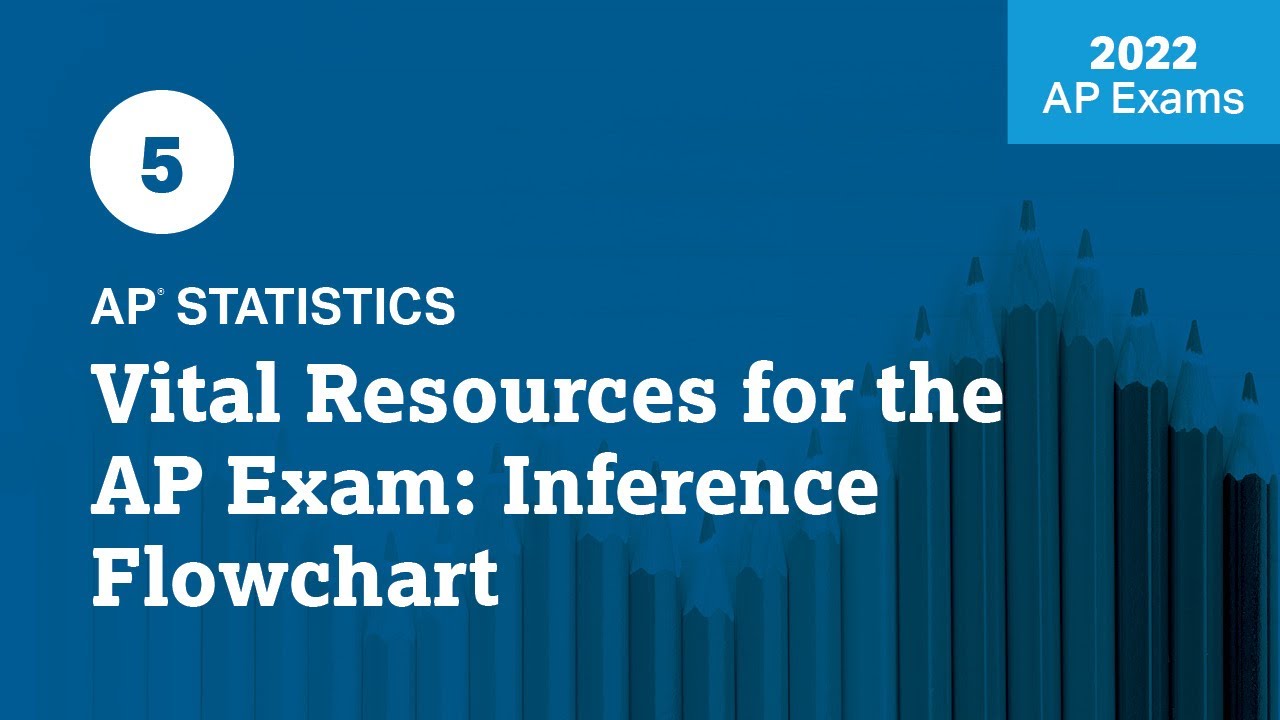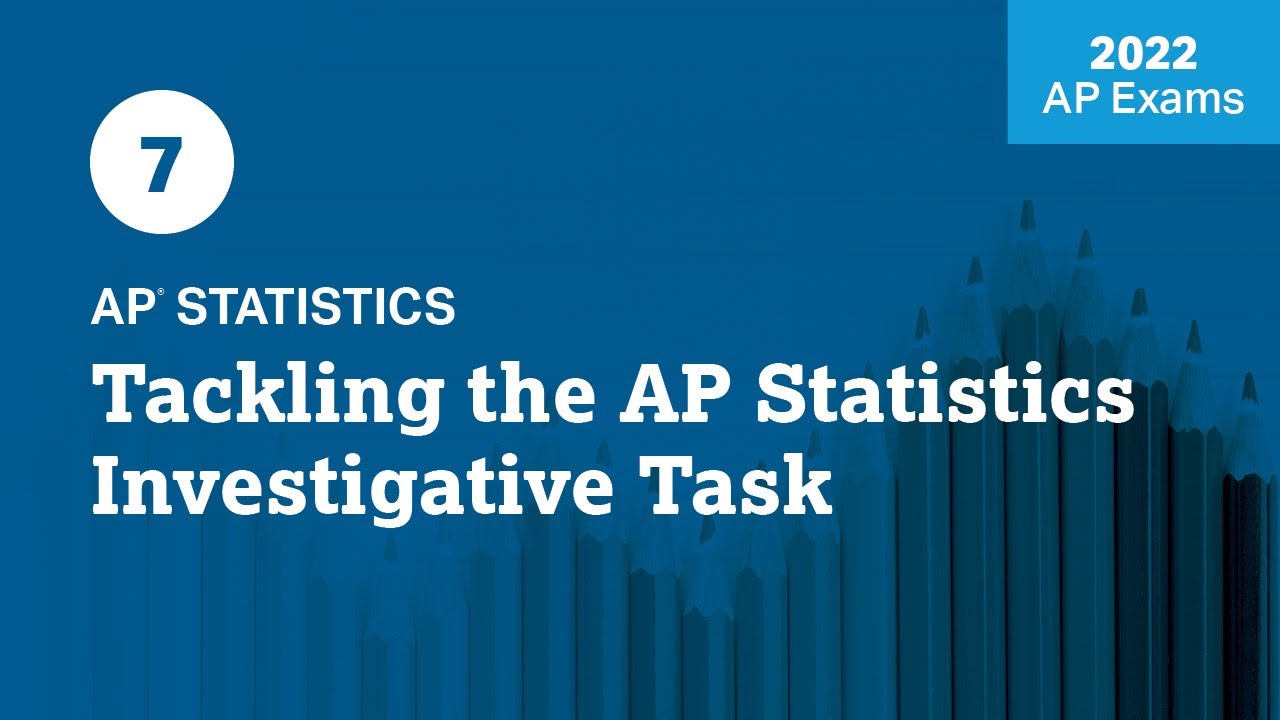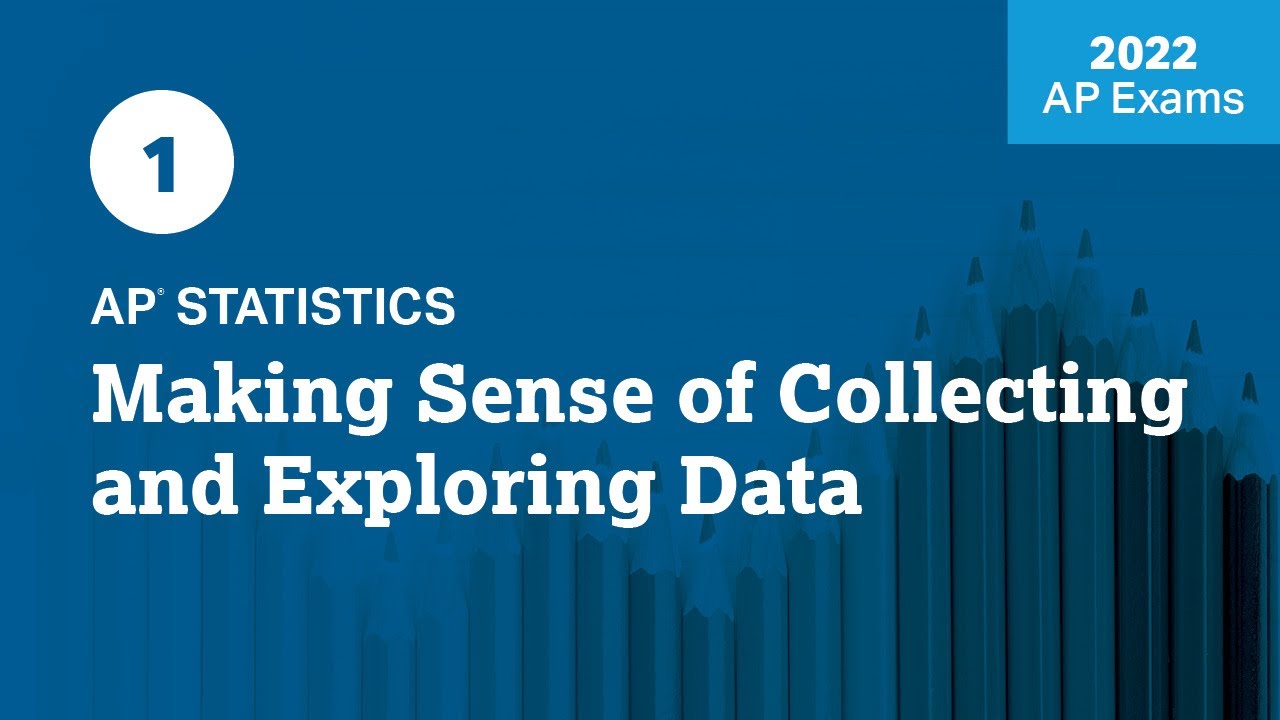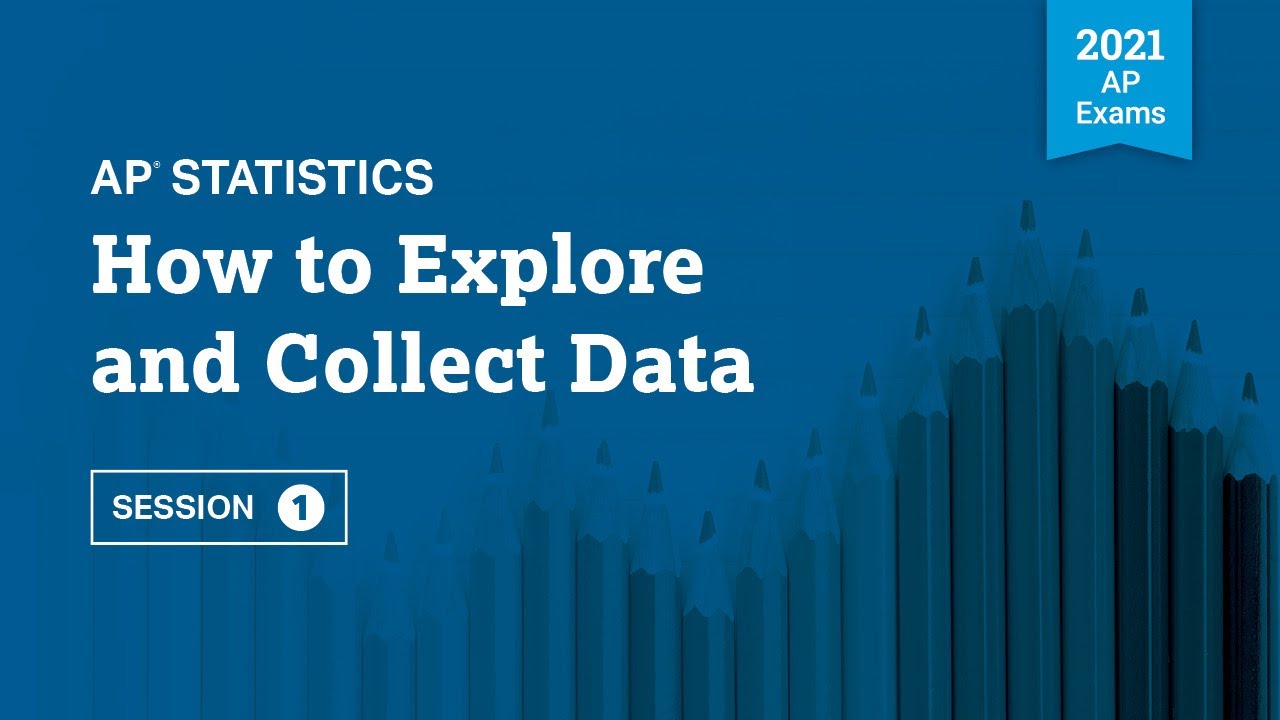2021 Live Review 6 | AP Statistics | Rubrics for Free-Response Success on the AP Statistics Exam
TLDRIn this AP Statistics live review session, instructor Darren Starns focuses on rubrics for success in free response questions. He discusses the importance of graphical evidence for linear model appropriateness, interpretation of regression output, and avoiding extrapolation. Starns also covers experimental design vocabulary like control groups and blocking, emphasizing the significance of context in responses. He provides examples of scoring guidelines for different types of questions, aiming to build students' confidence for the AP exam.
Takeaways
- 📚 The session focuses on rubrics for success in AP Statistics free response questions, emphasizing the importance of understanding scoring guidelines.
- 💡 Mr. Wilcox and Darren Starns provide tools and strategies for AP exam success, including the use of graphing calculators and the interpretation of statistical data.
- 🔍 The importance of using graphical evidence, such as scatter plots and residual plots, is highlighted for determining the appropriateness of a linear model.
- 📈 Students are guided on how to interpret regression output, including understanding the slope, y-intercept, r-squared, and standard deviation of residuals.
- 🚫 A reminder to avoid extrapolation when using regression models, as it involves predicting outside the range of the data used to create the model.
- 🧐 The significance of experimental design vocabulary such as control groups, replication, blinding, and blocking is discussed, with an emphasis on their role in statistical analysis.
- 🎯 When answering free response questions, it's crucial to answer in context and address all aspects of the question, as seen in examples where students lost points for not doing so.
- 📝 The four-step process for significance tests in free response questions is explained, including stating hypotheses, identifying the procedure, checking conditions, and making conclusions.
- 🤔 The session encourages students to think critically about the questions, such as choosing between blocking on clinics or breed of dogs in a study, and to justify their choices based on the study's context.
- 📉 The script provides examples of student responses and how they are scored, illustrating common errors and how to avoid them for full credit.
- 🗓️ The session concludes with a call for feedback and a reminder of upcoming sessions, emphasizing the value of continued practice and review for AP exam preparation.
Q & A
What is the main topic of the AP Daily Live Review Session Number Six?
-The main topic of the session is rubrics for free response success in AP Statistics.
Who is the presenter of the session?
-Darren Starns is the presenter of the session.
What are the three types of tools for success on the AP exam mentioned in the previous session?
-The script does not provide specific details about the three tools mentioned in the previous session by Mr. Wilcox.
Where can the materials for the session be found?
-The materials for the session, including the session 6 handout, formula sheet, and tables, can be found at a provided tiny URL address.
What is the importance of the alignment file added by Mr. Wilcox and Darren Starns?
-The alignment file is important as it aligns all of the AP Statistics live review questions to the AP daily videos, allowing students to find explanations or reviews for any questions they need clarification on.
Why is a graphing calculator an important resource for this session?
-A graphing calculator is important because it is a tool that students are expected to have prepared and be familiar with for the AP exam day, and it will be used during the session by the presenter.
What was the feedback response to a question about using a calculator for free response questions?
-For probability calculations, students can show the formula with numbers plugged in or use the calculator command with all inputs labeled. For inference calculations, students can show formulas with numbers or give the result directly from the calculator, including the name of the procedure used.
What is the significance of the question about passing the AP exam without mastering probability?
-The question highlights a student's concern about the importance of mastering all topics, especially probability, for exam success. The response encourages students to keep working on mastering probability before the exam.
What types of graphs can be used to check the normal condition when the sample size is small?
-Graphs such as a dot plot, stem plot, histogram, box plot, or a normal probability plot can be used to check the normal condition when the sample size is small.
What does the session aim to teach students about free response questions?
-The session aims to teach students how to become successful on free response questions using rubrics or scoring guidelines, by working through three free response questions from previous AP exams on different topics.
What is the scoring system for the free response questions based on the transcript?
-The scoring system awards one point for an essentially correct response, half a point for a partially correct response, and no points for an incorrect response. The scores for each part are then added together to determine the overall score.
Outlines
📚 AP Stats Review Session Introduction
In this introductory paragraph, Darren Starns welcomes AP Statistics students to the sixth live daily review session. He outlines the session's focus on rubrics for free response success and references tools discussed in the previous session by Mr. Wilcox. The presenter shares logistical reminders about available materials, including a handout, formula sheet, and tables, all accessible via a provided URL. Additionally, he mentions the alignment of AP Statistics live review questions with AP daily videos in a Google Sheet. The importance of a graphing calculator for the AP exam is emphasized, and the session's end will include a feedback solicitation via Google form. The response to a previous session's feedback about using a calculator for free response questions is also addressed, explaining the approach for probability calculations and inference calculations.
📈 Discussing Rubrics and Free Response Question Strategies
This paragraph delves into the specifics of free response questions, using rubrics or scoring guidelines to understand how to achieve full credit. The session plan includes working through three free response questions from previous AP exams, each highlighting different topics: exploring data, collecting data, and inference. The aim is to review scoring guidelines and common errors. The paragraph also discusses the importance of simplifying challenging content, sharing strategies for exam success, and building confidence. A detailed example of a free response question about the Great Plains Railroad's fuel consumption is presented, including a student response and how it aligns with the scoring guideline for model appropriateness.
📝 Scoring Guidelines and Student Responses
The paragraph continues the discussion on scoring guidelines, examining a student's response to a free response question about the relationship between fuel consumption and the number of rail cars. It covers how to score the response based on the clarity of reasoning, the correct use of the slope for calculating changes in fuel cost, and the interpretation of r-squared in the context of the problem. The scoring criteria are explained, emphasizing the need for clarity and accuracy in student responses. The paragraph also touches on the importance of aiming for optimal responses and the consequences of not meeting those standards.
🔍 Analyzing Regression Equation and Extrapolation
This paragraph focuses on the analysis of a regression equation's output and the concept of extrapolation. It discusses the interpretation of r-squared, the standard deviation of residuals, and the standard error of the slope. The paragraph presents a scenario where a student is asked whether it would be reasonable to use the fitted regression equation to predict fuel consumption for a train with 65 rail cars, far beyond the observed data range. The student's response, which advises against extrapolation, is evaluated against the scoring guideline, highlighting the importance of understanding the domain of the model.
🐾 Study Design for Canine Osteoarthritis Treatment
The paragraph presents a study design for evaluating the effectiveness of dietary supplements in promoting joint and hip health in dogs. It discusses the advantages of adding a control group to the study and the importance of randomization in assigning dogs to treatment groups. The paragraph also addresses the concept of blocking in experimental design, comparing the use of veterinary clinics versus dog breeds as blocking variables. The scoring guidelines for each part of the question are explained, emphasizing the need for context in responses and the importance of understanding experimental design principles.
🎲 Randomization and Blocking in Experimental Design
This paragraph continues the discussion on experimental design, focusing on the correct method of randomization and the decision-making process for choosing a blocking variable. It presents a student's response to assigning dogs to treatment groups using a die roll, which is evaluated as essentially correct. The paragraph also discusses the choice between blocking on clinics and breed of dog, highlighting the need to consider the variable with a stronger relationship to the response variable. The scoring for each part of the question is detailed, showing the consequences of not fully addressing the context or the variability associated with each blocking option.
🧬 Medical Study on Aspirin and Colon Cancer Risk
The paragraph describes a medical study investigating the effects of low-dose aspirin on colon cancer risk. It outlines the study's design, where volunteers are randomly assigned to take either aspirin or a placebo. The student's response to the study's analysis includes stating hypotheses, identifying the correct test procedure, and checking conditions for a two-sample z-test for proportions. The paragraph explains the scoring guidelines for each step, emphasizing the importance of correct parameter definition, understanding random assignment, and checking for approximate normality through expected counts.
📊 Z-Test Calculations and Statistical Evidence
This paragraph examines the mechanics of performing a z-test for a difference in proportions, including the calculation of the test statistic and p-value. It presents a student's attempt to calculate these values and the importance of linking the p-value to the given alpha level to make a statistical conclusion. The paragraph discusses the scoring guidelines for the mechanics and conclusion steps, noting that minor errors may still result in an essentially correct score if the overall response is accurate and contextually appropriate.
📉 Free Response Question Analysis and Conclusion
The paragraph concludes the discussion on free response questions, summarizing the importance of using content learned throughout the year to answer questions about linear model appropriateness, interpreting regression output, avoiding extrapolation, and understanding experimental design vocabulary. It emphasizes the need to answer in context, address both options when choosing between blocking variables, and follow the inference process for significance tests or confidence intervals. The paragraph invites feedback from students and previews upcoming sessions, highlighting the importance of the investigative task and offering top tips for exam success.
Mindmap
Keywords
💡Rubrics
💡Free Response Questions
💡Scatter Plot
💡Residual Plot
💡Linear Model
💡R-Squared
💡Extrapolation
💡Control Group
💡Randomization
💡Blocking
💡Inference
Highlights
Introduction to AP Statistics Daily Live Review Session 6 by Darren Starns focusing on rubrics for free response success.
Emphasis on the importance of understanding the rubrics for scoring guidelines in AP exam free response questions.
Availability of session materials, formula sheet, and tables at a provided URL for students' reference.
Introduction of an alignment file of AP Statistics live review questions to aid in exam preparation.
Necessity of having a graphing calculator prepared with statistical capabilities for the AP exam.
Feedback from session four addressed, including questions about calculator use in free response questions.
Explanation of how to answer free response questions involving probability calculations and inference calculations.
Discussion on the possibility of passing the AP exam without mastering every aspect of probability.
Advice on using different types of graphs to check the normal condition for small sample sizes in statistical inference.
Sharing of a 'warm fuzzy' feedback appreciating the effectiveness of the review sessions.
Request to see a copy of the rubric for free response questions, setting the stage for the session's main focus.
Plan for the session includes working through three free response questions from previous AP exams.
Review of scoring guidelines and common errors to help students understand how to earn full credit.
Introduction of a free response question about exploring data related to fuel consumption and rail cars.
Analysis of a student response regarding the appropriateness of a linear model for the given data.
Scoring guideline explanation for assessing linear model appropriateness in part A of a free response question.
Demonstration of calculating the change in average fuel cost per mile for an additional rail car.
Interpretation of r-squared value in the context of the fuel consumption and rail cars problem.
Discussion on the reasonableness of using the fitted regression equation for predicting fuel consumption for a train with 65 rail cars.
Introduction of a study on the effects of dietary supplements on canine osteoarthritis and the design of the experiment.
Advantages of adding a control group in the experimental design and the importance of context in responses.
Method for assigning dogs to treatment groups using a completely randomized design.
Decision-making process for choosing a blocking variable in an experiment, emphasizing the relationship to the response variable.
Introduction of a medical study on the effects of low-dose aspirin on colon cancer risk.
Step-by-step guide on conducting a hypothesis test for the medical study, including stating hypotheses and checking conditions.
Mechanics of calculating the test statistic and p-value for the aspirin and colon cancer study.
Conclusion drawing from the p-value comparison with alpha level in the medical study.
Summary of key takeaways from the session on free response questions and scoring guidelines.
Invitation for feedback and announcement of upcoming sessions focusing on the investigative task and top 10 tips for AP exam success.
Transcripts
Browse More Related Video

2022 Live Review 5 | AP Statistics | Vital Resources for the AP Exam: Inference Flowchart

2022 Live Review 7 | AP Statistics | Tackling the AP Statistics Investigative Task

2022 Live Review 1 | AP Statistics | Making Sense of Collecting and Exploring Data

2021 Live Review 8 | AP Statistics | Top 10 Tips for Success on the AP Statistics Exam

2021 Live Review 1 | AP Statistics | How to Explore and Collect Data

2022 Live Review 2 | AP Statistics | Making Sense of Probability & Random Variables
5.0 / 5 (0 votes)
Thanks for rating: